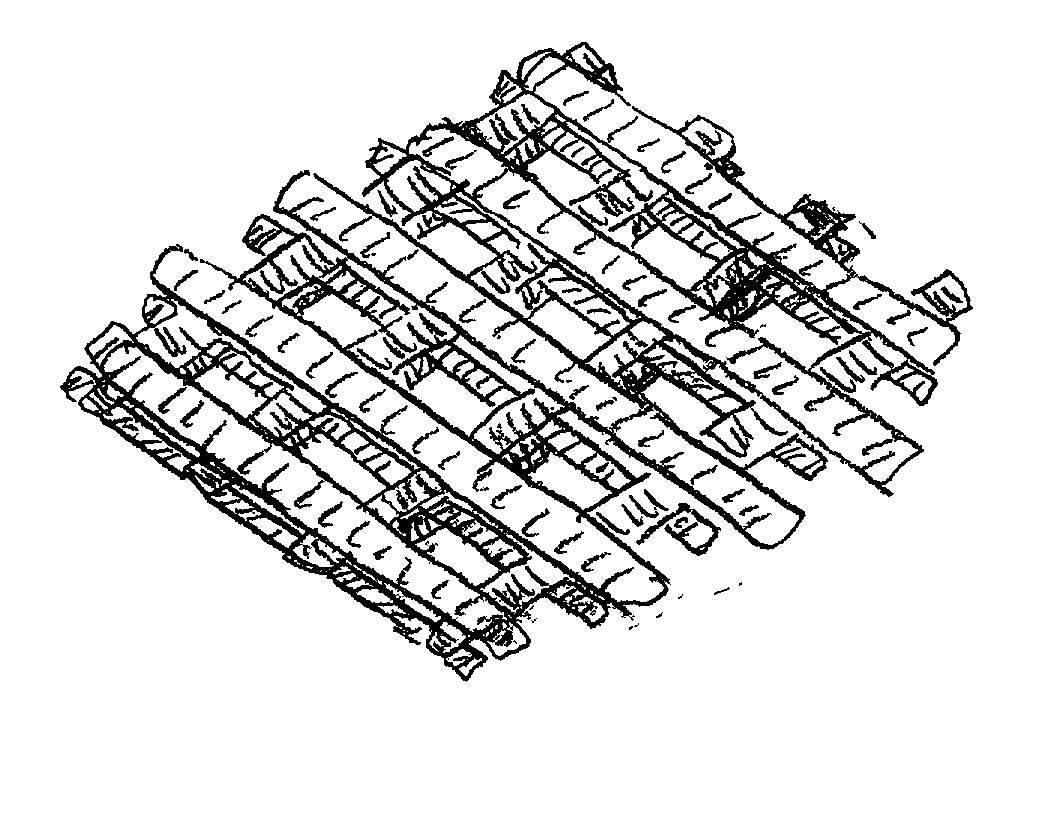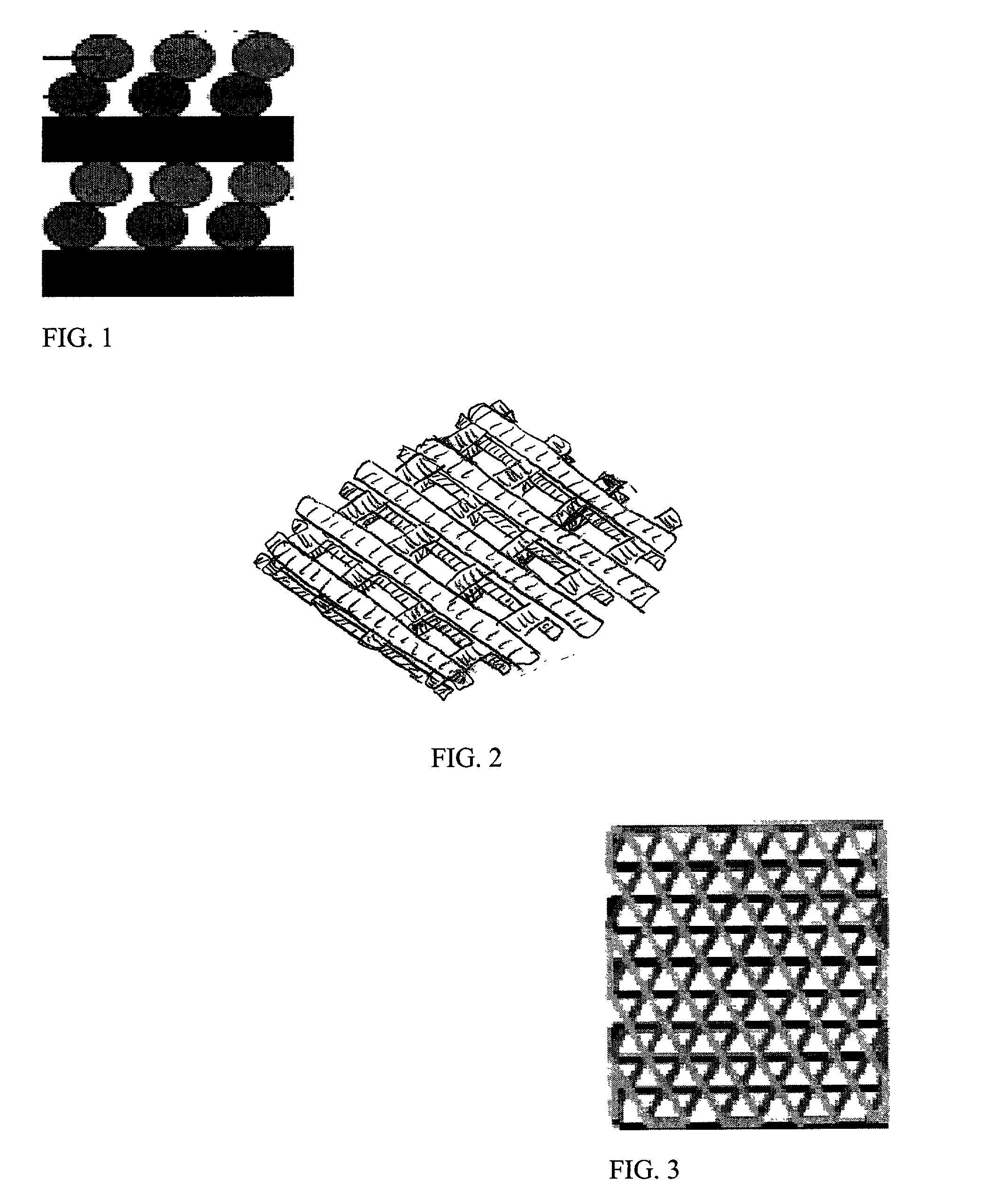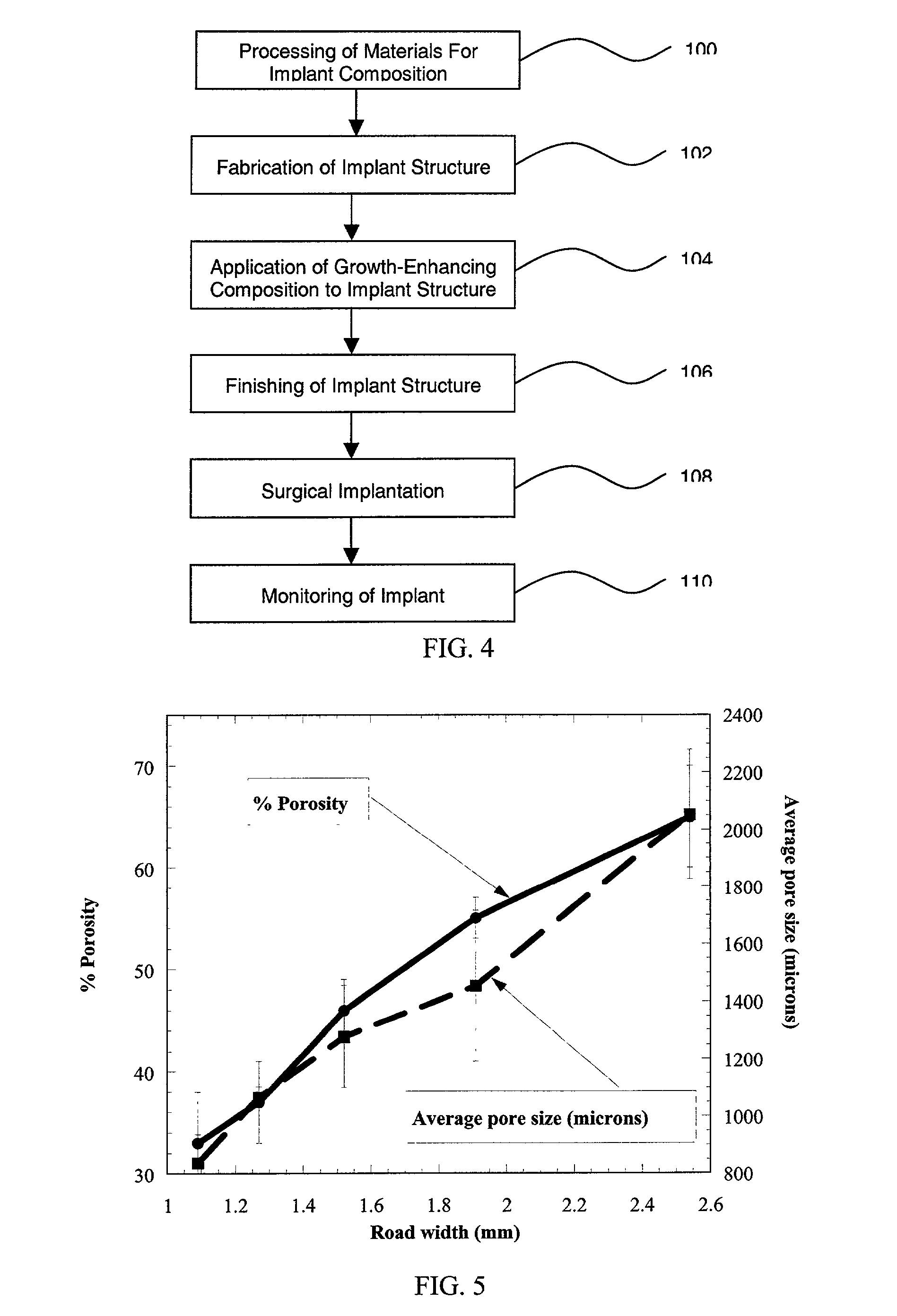Compositions and methods for biomedical applications
a biomedical and biomedical technology, applied in the field of biomedical applications, can solve the problems of osteolysis, inability to perform additional surgery to replace implants, and many problems, and achieve the effects of increasing road width, increasing pore sizes of test pieces, and facilitating manipulation of porosity levels
- Summary
- Abstract
- Description
- Claims
- Application Information
AI Technical Summary
Benefits of technology
Problems solved by technology
Method used
Image
Examples
example 1
[0052] Experiments were conducted regarding the formulation of the polymer compositions for forming the implant structures. Poly-2-ethyl-2-oxazoline (PEOx) was mixed with PBT and calcium phosphate. The blending was performed at 215.degree. C. Typical free-formable PEOx / PBT blend combinations are given in Table 1. Experiments indicated blending could be performed at 215.degree. C. even though the melting point of PBT was 250.degree. C. Feedrods of the blend were made and extruded with the extrusion freeform fabrication ("EFF") process. However, since the blending temperature was much lower than the melting point of the PBT material, small chunks of PBT remained in the blend. Therefore, the material did not extrude effectively during freeform fabrication. Consequently, it is believed that blending at a higher temperature will provide complete blending of the PBT with the PEOx. It was noted that the addition of any acid containing groups to PEOx tended to degrade the blends by breaking...
example 2
[0053] Experiments were conducted to optimize the EFF operating parameters. Critical variables were: start delay, main flow, roll back, speed and road width (e.g., final width of the extruded ribbon of material upon cooling). Table 2 shows the optimized values obtained for the EFF process using a 0.0016" size nozzle tip. These values will vary slightly with other nozzle tip sizes. The extrusion temperature in each case will depend on the material being extruded.
[0054] Porous test samples of PMMA and PBT were fabricated using these process conditions. A series of 1" diameter PMMA test samples were fabricated with raster road widths varying from 1.09 mm (0.0429") to 2.54 mm (0.1"). In previous experiments, it was observed that the nominal raster road width obtained for a 0.41 mm (0.016") tip was 0.64 to 0.76 mm. That is, although the material is extruded in a ribbon of substantially circular cross-section, upon deposition the material will settle somewhat to form a ribbon having, for ...
example 3
[0058] Tests were performed to determine the effectiveness of impregnating a porous specimen with an osteoinductive polymer / ceramic blend. For example, polycarbonate specimens having a series of through holes were tested. The specimens were impregnated with blend consisting of polycaprolactone (Tone-polyol 0260 from Union Carbide) and polycaprolactone mixed with 3.beta. calcium phosphate. Polycaprolactone is a biocompatible liquid, however, other biocompatible liquids, such as copolymers of 50:50 polylactic-polyglycolic acid may also be used.
[0059] The blends were heated to about 80-100.degree. C. to enable an easy flow. The specimens were impregnated with the heated blends and covered with a thin sheet of mylar. A vacuum was applied on the specimens so that the mylar sheet collapsed around the polycarbonate sheet and held the impregnated blend in place. On cooling, the blend solidified and stayed inside the pores.
[0060] Using the above technique, several more porous test specimens ...
PUM
| Property | Measurement | Unit |
|---|---|---|
| pore size | aaaaa | aaaaa |
| pore size | aaaaa | aaaaa |
| temperatures | aaaaa | aaaaa |
Abstract
Description
Claims
Application Information
 Login to View More
Login to View More - R&D
- Intellectual Property
- Life Sciences
- Materials
- Tech Scout
- Unparalleled Data Quality
- Higher Quality Content
- 60% Fewer Hallucinations
Browse by: Latest US Patents, China's latest patents, Technical Efficacy Thesaurus, Application Domain, Technology Topic, Popular Technical Reports.
© 2025 PatSnap. All rights reserved.Legal|Privacy policy|Modern Slavery Act Transparency Statement|Sitemap|About US| Contact US: help@patsnap.com



